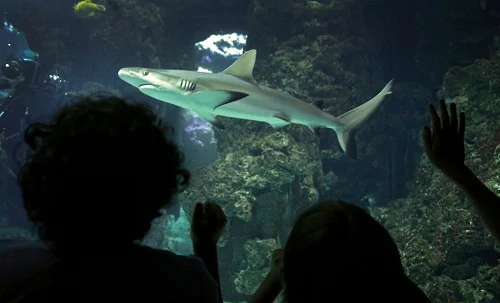Named for their distinctive white fin tips, white tip reef sharks are usually found during the day, resting in groups around the reefs, and are a popular sight for divers. They become active at night, preying on small fish and other reef dwellers.
Photos of one of the sharks with spots and lesions on its head went viral on social media in April after being taken by an underwater photographer off the coast of Sabah on Borneo Island.
Soon after, divers on Sipadan Island, a famous diving spot nearby, and a team of experts from the state university, government and conservation organizations began observing the skin disease in every group of sharks they encountered.
In trying to determine the cause of the disease, the team found that sea surface temperatures on Sipadan rose to 29.5 degrees Celsius in May, a degree higher than in 1985.
“We can almost certainly assume that warming oceans play a role in what we’re seeing in Sipadan sick sharks,” said Davis Austin Spiji, senior marine biologist for the nonprofit conservation group Reef Guardian, ruling out human error because Sipadan is a protected marine area where fishing is strictly prohibited and there are no settlements or industries nearby.
According to Mohamed Sharif Mohamed Deen, a professor of aquatic veterinary medicine at the University of Putra Malaysia, reports of sightings coincide with reports of coral bleaching in the area.
“We can’t ignore that changes are happening there because of rising temperatures,” Mohamed Shariff said.
However, a full scientific study has yet to be conducted.
In May, the research team tried but failed to catch some sharks to get samples for analysis, said Mabel Manjaji-Matsumoto, a senior lecturer at the Borneo Institute of Marine Studies at the University of Malaysia Sabah.
“If we can get shark samples, we can probably figure out at least the pathogenic cause of the lesions,” Manjaji-Matsumoto said, adding that the team plans to make another attempt in July.
